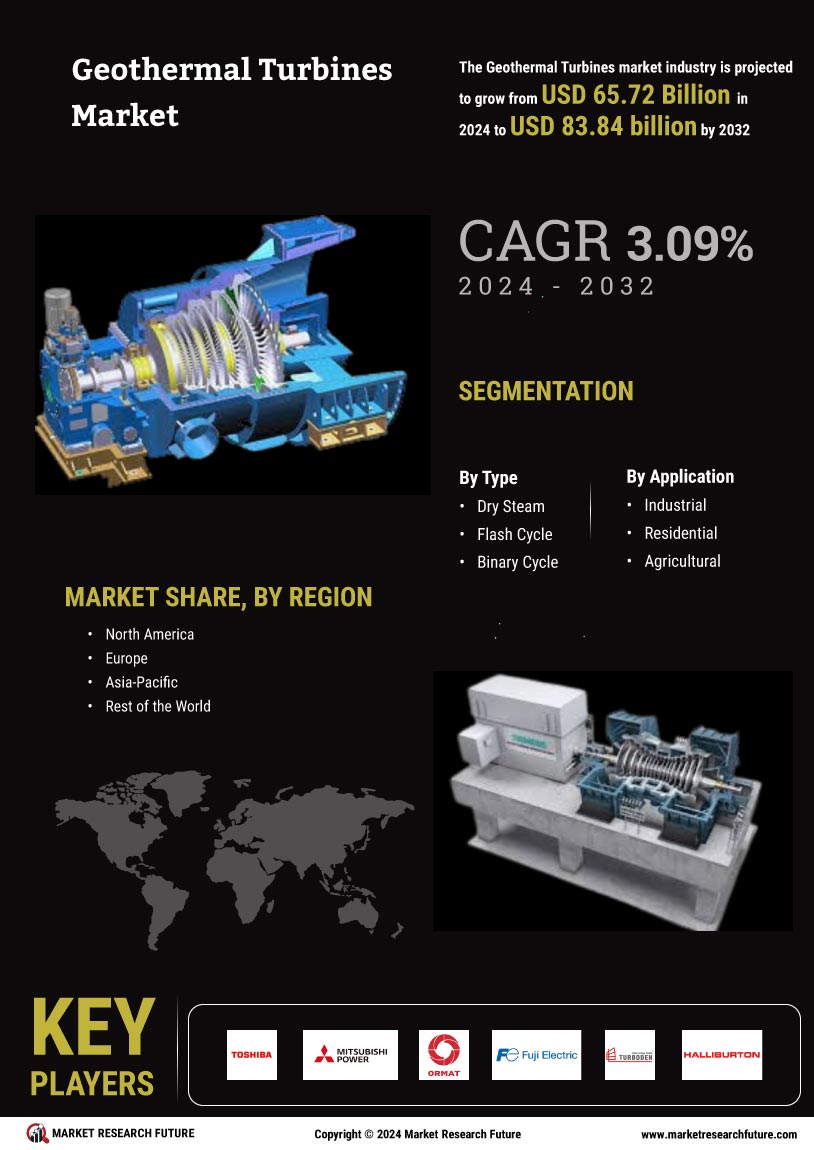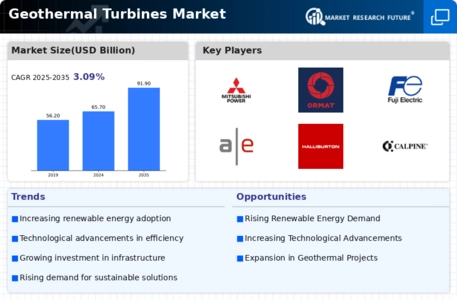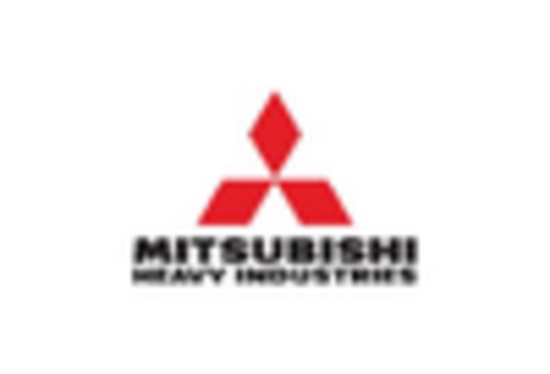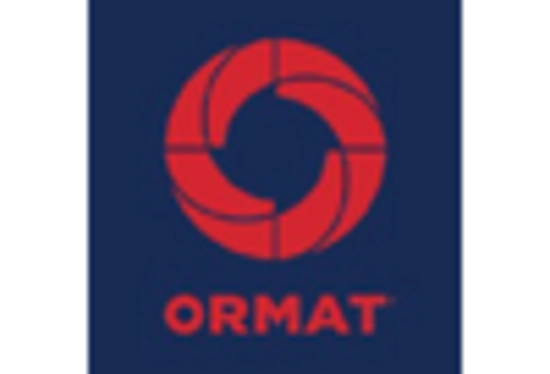Supportive Regulatory Frameworks
Supportive regulatory frameworks are playing a pivotal role in shaping the Geothermal Turbines Market. Governments worldwide are implementing policies that promote the development and utilization of renewable energy sources, including geothermal energy. Incentives such as tax credits, grants, and favorable tariffs are being introduced to encourage investment in geothermal projects. These regulatory measures not only enhance the economic feasibility of geothermal energy but also create a conducive environment for the growth of the Geothermal Turbines Market. As regulatory support continues to strengthen, it is anticipated that more stakeholders will enter the market, further driving the demand for geothermal turbines.
Rising Demand for Renewable Energy
The increasing The Geothermal Turbines Industry. As nations strive to meet their energy needs sustainably, geothermal energy emerges as a viable alternative. According to recent data, the share of renewable energy in the global energy mix is projected to rise significantly, with geothermal energy contributing a notable portion. This shift is driven by the need to reduce greenhouse gas emissions and combat climate change. Consequently, investments in geothermal power plants are expected to surge, thereby enhancing the demand for geothermal turbines. The Geothermal Turbines Market is likely to benefit from this trend, as more countries recognize the potential of geothermal energy to provide a stable and reliable power supply.
Growing Awareness of Environmental Benefits
The growing awareness of the environmental benefits associated with geothermal energy is influencing the Geothermal Turbines Market. As stakeholders become more conscious of the ecological impacts of traditional energy sources, geothermal energy is increasingly viewed as a cleaner alternative. The low carbon footprint of geothermal power generation, coupled with its minimal land use requirements, positions it favorably in the renewable energy landscape. This heightened awareness is prompting governments and businesses to invest in geothermal technologies, thereby driving demand for geothermal turbines. The Geothermal Turbines Market stands to gain from this trend, as more entities seek to align their energy strategies with sustainable practices.
Technological Innovations in Turbine Design
Technological advancements in turbine design are reshaping the Geothermal Turbines Market. Innovations such as improved efficiency and enhanced durability of turbines are being developed to optimize energy extraction from geothermal resources. For instance, the introduction of advanced materials and design methodologies has led to turbines that can operate at higher temperatures and pressures, thereby increasing their overall efficiency. This is particularly relevant as the efficiency of geothermal power plants is a critical factor in their economic viability. As a result, the market is witnessing a trend towards the adoption of cutting-edge turbine technologies, which could potentially lead to a reduction in the cost of geothermal energy production, further stimulating growth in the Geothermal Turbines Market.
Increasing Investment in Geothermal Projects
The surge in investment in geothermal energy projects is a significant driver for the Geothermal Turbines Market. Financial backing from both public and private sectors is crucial for the development of geothermal power plants. Recent reports indicate that investment in geothermal energy has been on the rise, with several countries allocating substantial funds to explore and develop geothermal resources. This influx of capital not only facilitates the construction of new geothermal plants but also supports research and development initiatives aimed at enhancing turbine technology. As more projects come online, the demand for geothermal turbines is expected to increase, thereby propelling the growth of the Geothermal Turbines Market.

















Leave a Comment